As someone who’s spent years advising restaurants on kitchen equipment, I’ve seen firsthand how the right tools can make or break a dining operation. When it comes to commercial induction cookers, one question I hear often is whether bigger is always better—specifically, does higher power guarantee better performance? It’s a fair question, especially since power ratings are a key spec that restaurant owners focus on when choosing equipment. In this article, I’ll break down the role of power in commercial induction cookers, explore whether higher wattage is always the way to go, and share practical insights to help you make an informed decision for your restaurant.
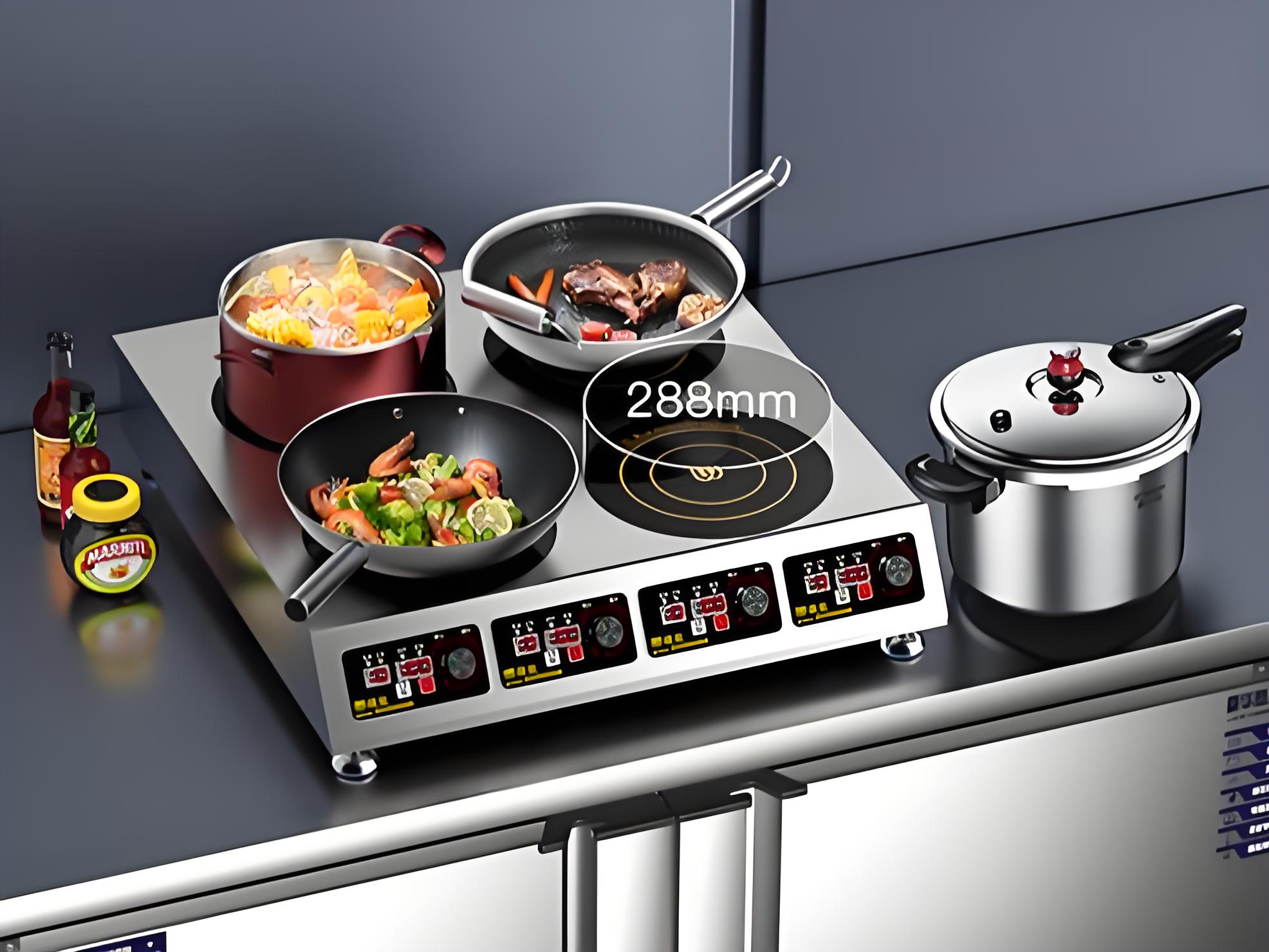
Understanding Power in Commercial Induction Cookers
Before diving into whether higher power is better, let’s clarify what “power” means in the context of commercial induction cookers. Power, measured in kilowatts (kW), indicates how much electrical energy the cooker consumes and, in turn, how much heat it can generate. Commercial induction cookers typically range from 3kW to 20kW or more, compared to household models, which are usually under 2kW.
Higher power generally translates to faster heating and the ability to handle larger cookware or more intense cooking tasks. But does that mean you should always opt for the highest wattage available? Not necessarily. The answer depends on your restaurant’s specific needs, kitchen setup, and operational goals. Let’s explore this step by step.
The Benefits of Higher-Power Induction Cookers
I’ve worked with countless restaurant owners, from small café operators to managers of large hotel kitchens, and higher-power induction cookers often shine in certain scenarios. Here’s why they can be a game-changer:
Faster Cooking Times: A 15kW induction cooker can bring a pot of water to a boil much faster than a 5kW model. For high-volume restaurants like fast-food chains or buffet-style eateries, this speed can significantly boost kitchen efficiency and table turnover.
Handling Large Cookware: Higher-power cookers are better equipped to heat large woks or stockpots evenly, which is crucial for restaurants preparing bulk dishes like soups, stews, or stir-fries for large groups.
Consistent Performance Under Pressure: During peak hours, when multiple dishes need to be cooked simultaneously, a high-power cooker maintains stable performance without losing heat output, ensuring consistent results.
Versatility for Demanding Tasks: If your menu includes dishes requiring sustained high heat, such as searing steaks or rapid stir-frying, a higher-wattage cooker can better meet those demands.
I recall a client who ran a busy hot pot restaurant. They upgraded from 8kW to 15kW induction cookers for their tabletop units. The result? Customers got their broth boiling faster, which improved the dining experience and allowed the restaurant to serve more tables during peak hours.
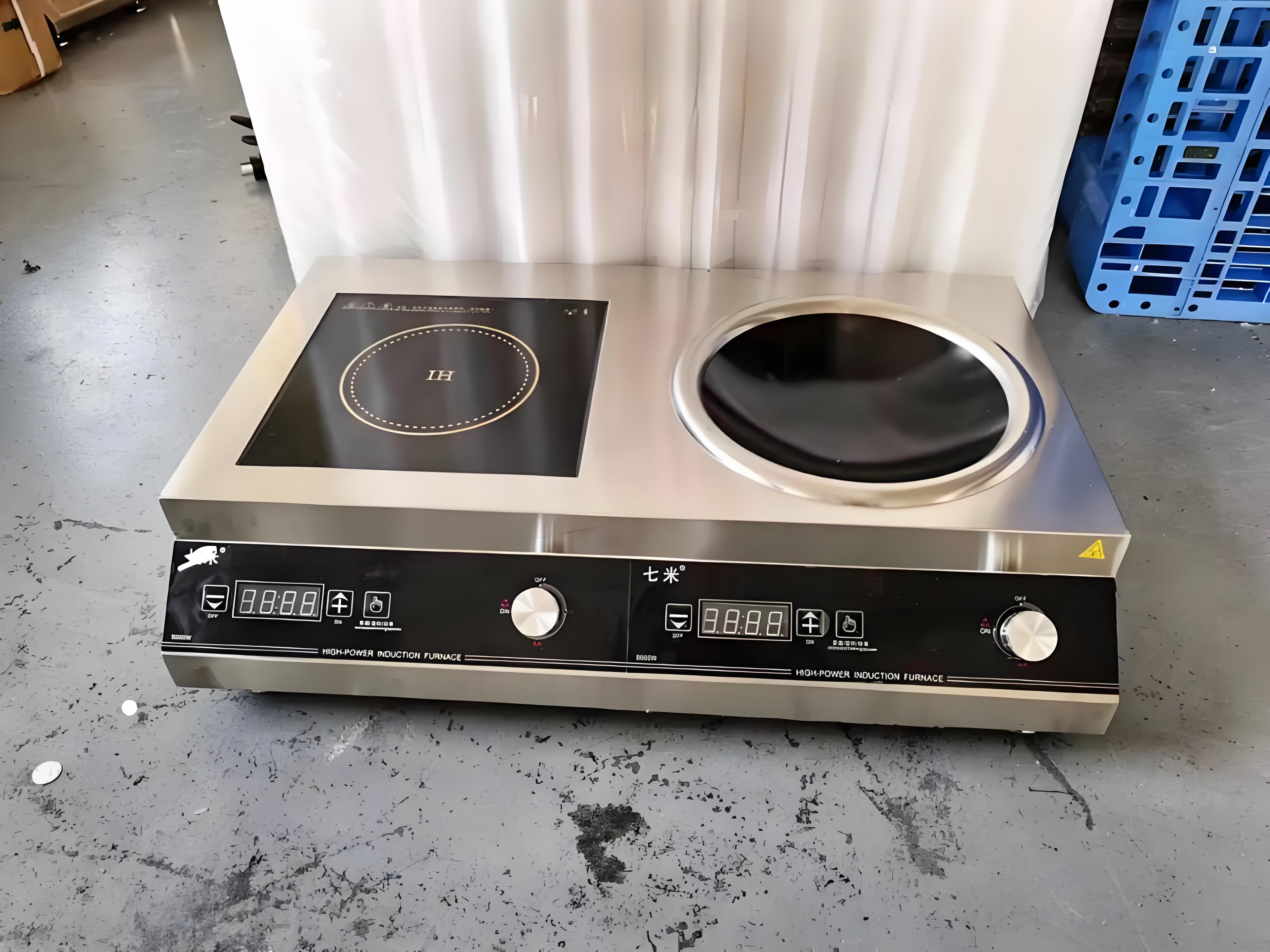
The Downsides of High-Power Induction Cookers
While higher power sounds appealing, it’s not always the best choice. Over the years, I’ve seen restaurants make costly mistakes by assuming “more power” equals “better.” Here are some key drawbacks to consider:
Increased Energy Costs: Higher-power cookers consume more electricity. If your restaurant doesn’t need the extra firepower, you’re essentially paying for unused capacity. For smaller operations, a 5kW or 8kW cooker is often sufficient and more cost-effective.
Higher Upfront Costs: High-power induction cookers are significantly more expensive. A 20kW model can cost double or triple a 5kW unit, which can strain budgets, especially for startups or small restaurants.
Electrical Infrastructure Demands: High-power cookers often require three-phase power and dedicated circuits. If your kitchen’s electrical system isn’t up to par, you may face costly upgrades. I once worked with a small bistro that had to delay their opening by two months because their wiring couldn’t support a 15kW cooker.
Overkill for Certain Menus: If your restaurant focuses on light dishes like salads, sandwiches, or slow-cooked items, a high-power cooker may be unnecessary. For example, a café serving paninis and soups doesn’t need the same firepower as a wok-based Asian restaurant.
To illustrate the trade-offs, here’s a comparison table of different power levels for commercial induction cookers:
| Power Level | Cooking Speed | Suitable Restaurant Size | Electrical Requirements |
|---|---|---|---|
| 3kW-5kW | Moderate | Small (20-50 seats) | Standard single-phase power |
| 8kW-12kW | Fast | Medium (50-100 seats) | Single or three-phase power |
| 15kW-20kW+ | Very Fast | Large (100+ seats) | Three-phase power, dedicated circuits |
Factors to Consider When Choosing Power Levels
Choosing the right power level for your induction cooker isn’t just about picking the highest number. Based on my experience, here are the key factors to evaluate:
1. Menu and Cooking Style
Your menu is the starting point. If you’re running a Sichuan restaurant where rapid, high-heat stir-frying is essential, a 12kW or higher cooker might be necessary to approximate the “wok hei” flavor that gas stoves achieve. On the other hand, a hot pot restaurant or a Western-style bistro serving grilled sandwiches can get by with 5kW-8kW models. I once advised a client running a vegan café to stick with 5kW cookers, as their menu focused on soups and steamed dishes, and the lower power saved them thousands in electricity costs annually.

2. Kitchen Electrical Capacity
This is a critical but often overlooked factor. High-power induction cookers, especially those above 10kW, typically require three-phase power and robust wiring. Before purchasing, have an electrician assess your kitchen’s electrical capacity. I’ve seen restaurants invest in high-power equipment only to discover their building’s wiring couldn’t handle it, leading to expensive retrofits or equipment sitting unused.
3. Restaurant Size and Volume
The size of your restaurant and the number of customers you serve daily directly impact the power level you need. A small café with 20-50 seats can function well with lower-power cookers (3kW-8kW). Medium to large restaurants with 100+ seats or high turnover, like fast-food chains, benefit from 12kW-20kW models to keep up with demand. For example, a client running a 200-seat buffet restaurant switched to 15kW cookers and saw a 30% reduction in cooking time for large batches.
4. Budget Constraints
High-power cookers come with higher price tags and increased energy consumption. If your budget is tight, consider starting with mid-range models and upgrading as your business grows. A modular approach—adding more units over time—can be more cost-effective than investing in a single high-power cooker upfront.
5. Local Energy Costs and Regulations
Electricity prices vary by region, and high-power cookers can significantly increase your utility bills. Check your local electricity rates and calculate the long-term costs. Additionally, some cities have regulations limiting high-power equipment to reduce strain on the grid. I once helped a restaurant in a coastal city navigate these restrictions by recommending a mix of 8kW and 12kW cookers to balance performance and compliance.
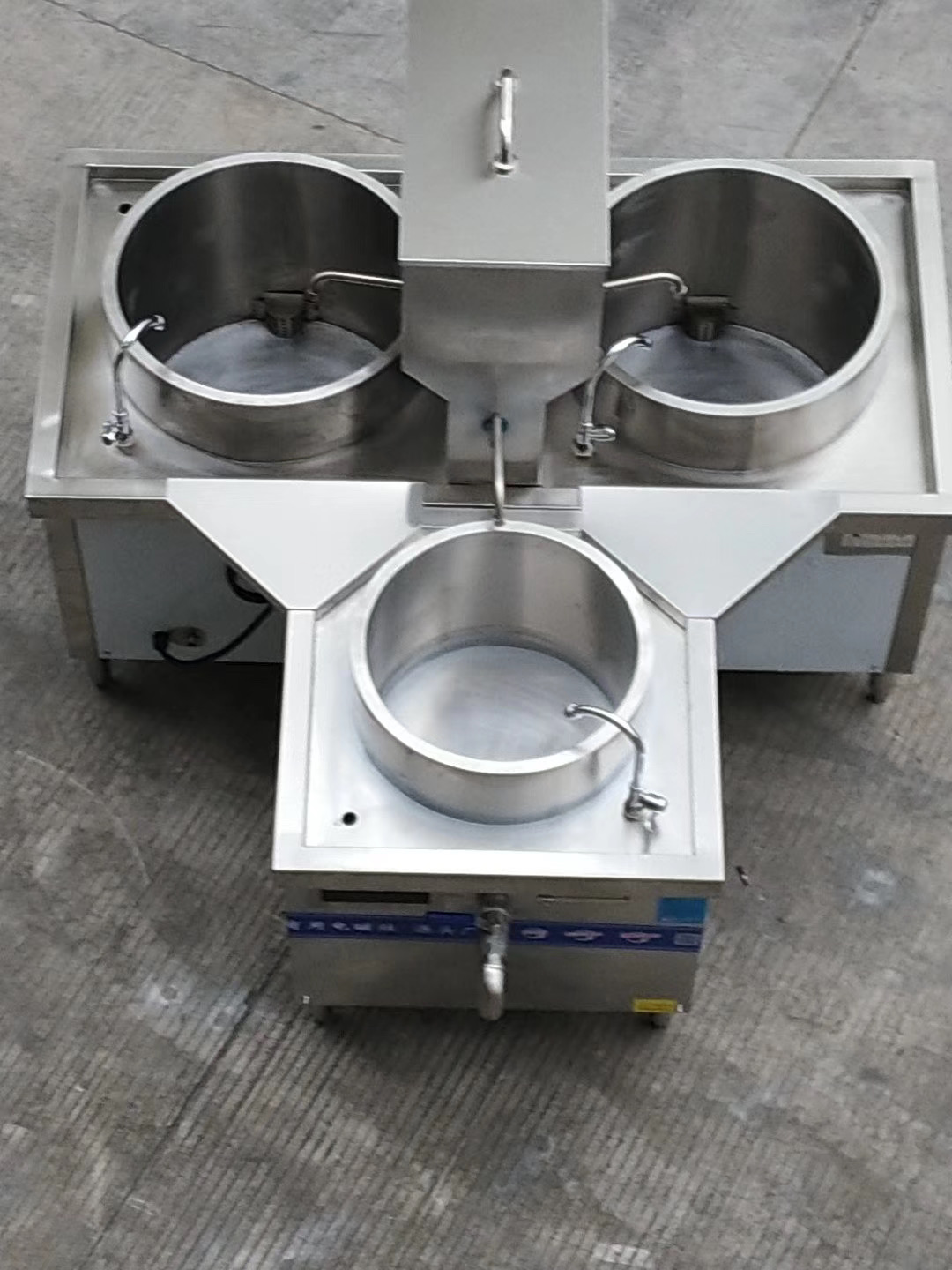
Balancing Power with Practicality: Real-World Examples
To bring this to life, let me share two stories from my work with restaurants:
Case Study 1: The Overpowered Mistake
A mid-sized restaurant specializing in noodle dishes invested in 20kW induction cookers, assuming they’d improve efficiency. However, their menu primarily involved boiling noodles and simmering broths, tasks that didn’t require such high power. The result? Sky-high electricity bills and frequent circuit breaker trips due to inadequate wiring. After my consultation, they downgraded to 8kW cookers, which met their needs perfectly and cut their energy costs by 40%.
Case Study 2: The Right Power for Growth
Another client, a fast-growing fast-casual chain, initially used 5kW cookers but struggled during peak hours. After analyzing their menu (mostly stir-fries and fried items), I recommended upgrading to 12kW cookers. The higher power reduced cooking times by 25%, allowing them to serve more customers and expand their business without needing to hire additional staff.
These cases highlight a key lesson: Power should match your restaurant’s specific needs, not just the highest number on the spec sheet.
Tips for Optimizing Induction Cooker Performance
Regardless of the power level you choose, proper use and maintenance are crucial for getting the most out of your investment. Here are some tips I share with my clients:
Match Cookware to Power: Use pots and pans that align with your cooker’s power output. For high-power models, choose larger, thicker cookware to maximize heat transfer. For lower-power units, smaller pots prevent energy waste.
Monitor Usage Patterns: Train staff to use the appropriate power settings. Running a 15kW cooker at full blast for simple tasks like boiling water is inefficient. Most modern cookers have adjustable settings—use them wisely.
Ensure Proper Ventilation: High-power cookers generate more heat, which can overheat the unit if not properly ventilated. Keep the surrounding area clear and check that the cooker’s cooling fans are functioning.
Schedule Regular Maintenance: Clean the cooker’s surface daily to prevent oil buildup, which can affect performance. Also, have a technician inspect the unit annually to ensure electrical components are in good condition.
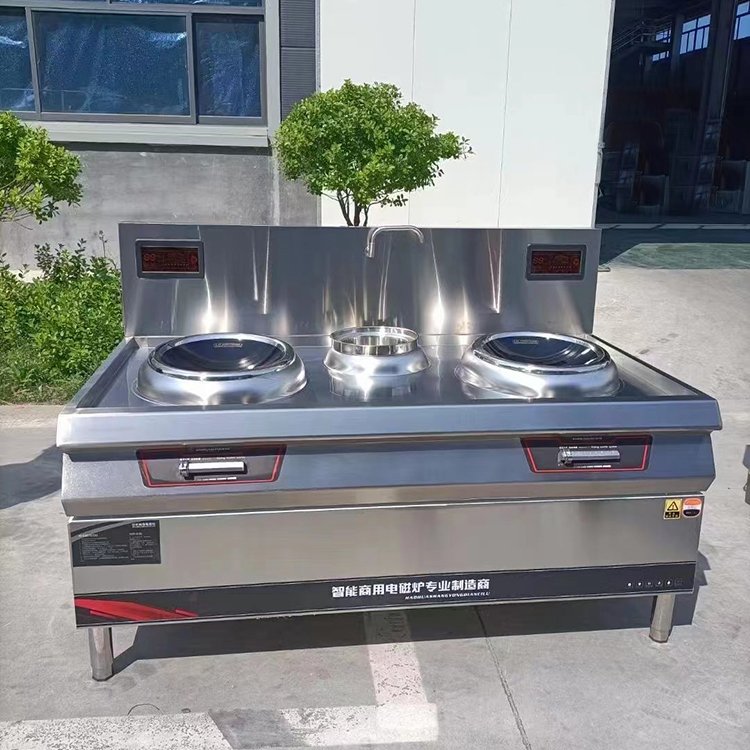
The Future of Power in Commercial Kitchens
Looking ahead, the trend in commercial kitchens is leaning toward smarter, more efficient equipment. Advances in induction technology are making even mid-range power cookers (8kW-12kW) more capable, with features like adaptive power distribution and energy-saving modes. Data I’ve come across suggests the global market for commercial induction cookers is growing at a 10% annual rate, driven by rising energy costs and stricter environmental regulations. In the coming years, I expect we’ll see more restaurants adopting mid-to-high-power induction cookers as electricity becomes a more reliable and cost-effective energy source compared to gas.
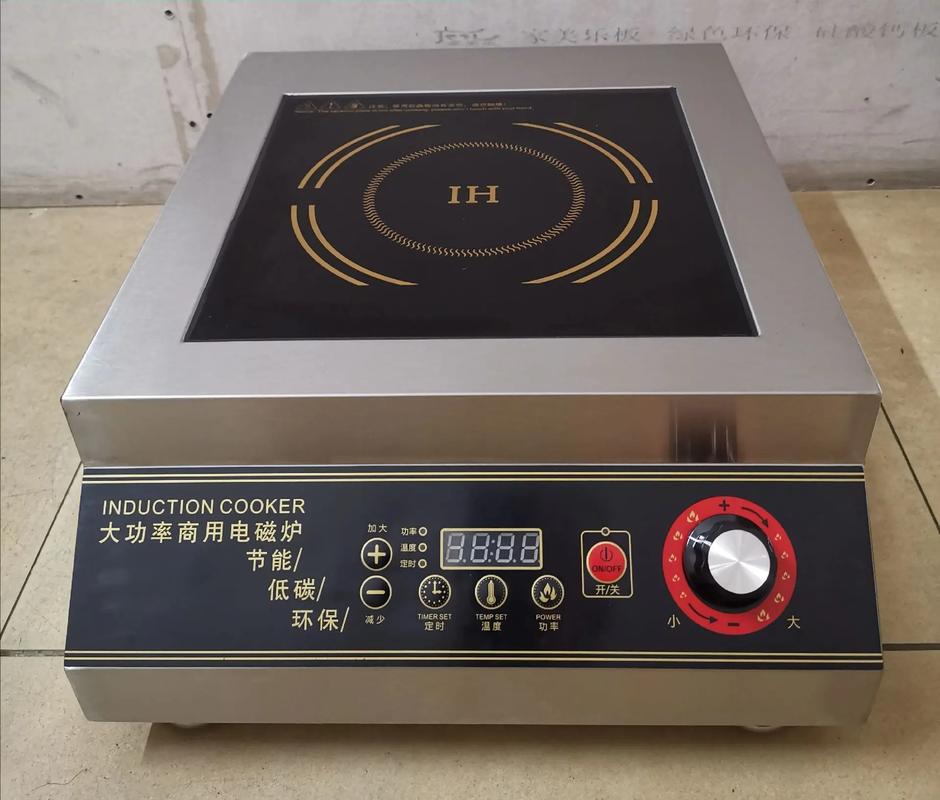
Conclusion
So, is a higher-power commercial induction cooker always better? Not necessarily. While high-power models offer speed and versatility for large, high-volume restaurants, they come with higher costs and electrical demands that may not suit smaller operations or simpler menus. The key is to align the cooker’s power with your restaurant’s cuisine, customer volume, electrical capacity, and budget. If you’re unsure, start with a mid-range model and scale up as needed. By choosing wisely, you can ensure your kitchen runs efficiently without breaking the bank.
| Power Level | Cooking Speed | Suitable Restaurant Size | Electrical Requirements |
|---|---|---|---|
| 3kW-5kW | Moderate | Small (20-50 seats) | Standard single-phase power |
| 8kW-12kW | Fast | Medium (50-100 seats) | Single or three-phase power |
| 15kW-20kW+ | Very Fast | Large (100+ seats) | Three-phase power, dedicated circuits |
Frequently Asked Questions
1. How do I know what power level is right for my restaurant?
Assess your menu, customer volume, and electrical capacity. For small restaurants with simple menus, 5kW-8kW is often enough. Larger restaurants with high-heat cooking may need 12kW or more.
2. Do higher-power induction cookers use a lot more electricity?
Yes, a 15kW cooker consumes significantly more electricity than a 5kW model. However, efficient usage (e.g., adjusting power settings) can mitigate costs.
3. Can a high-power induction cooker replace a gas stove for stir-frying?
It depends. High-power models (12kW+) can handle stir-frying but may not replicate the intense “wok hei” flavor of gas stoves, which reach higher temperatures.
4. What happens if my kitchen’s wiring can’t support a high-power cooker?
You may need to upgrade to three-phase power or install dedicated circuits, which can be costly. Consult an electrician before purchasing.
5. Are there energy-saving features in high-power induction cookers?
Many modern models have adjustable power settings and energy-efficient modes. Training staff to use these features can reduce electricity consumption.
If you have more questions or need tailored advice, feel free to ask—I’m here to help!





